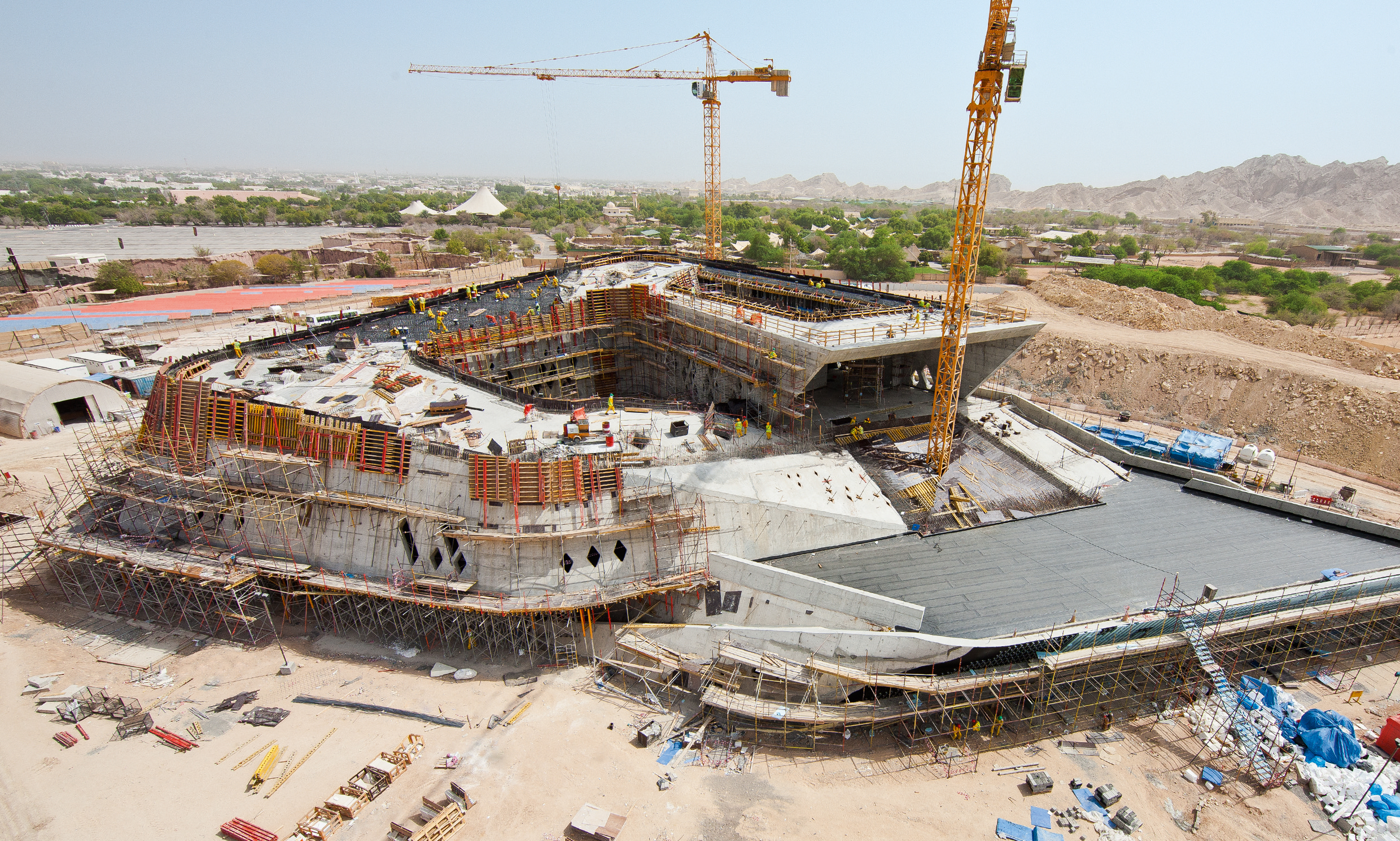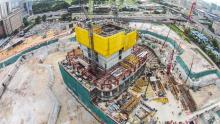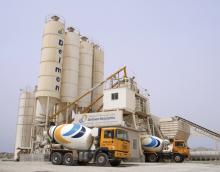
Little can be constructed without using concrete, probably the world’s most versatile material, as Patrick Smith reports
As if needed, the construction of a canoe made entirely out of concrete is yet another way of proving the material’s versatility.
While making such craft using concrete is not new, one of the most recent examples has come from Utah State University (USU) in the USA where an engineering club paddled a lighter-than-water concrete canoe. It finished first for the second consecutive year at an
The 5.5m long, 1.27cm thick, 59kg concrete canoe floated because it was made with a type of cement that uses glass rather than sand as filler and is said to be a vast improvement from the team’s 144kg boat from 2011.
However it is made, concrete, the second most used material in the world behind water, is seen in nearly every type of construction, particularly buildings, bridges and dams.
Indeed, it has been reported that the Scottish government is trying to quell local resentment at construction contracts being awarded to companies from outside Scotland by highlighting domestic componentry of the £1 billion (€1.25 billion) Forth Bridge Replacement Crossing, near the capital Edinburgh.
The £790 million (€986 million) main construction contract went to the Forth Crossing Bridge Constructors (FCBC), which includes Hochtief of Germany; Dragados of Spain and American Bridge of the USA, as well as
Steel is being sourced in China, Poland and Spain and cement and admixture materials are coming from
Project client
The first of these is with
A sub-contract for aggregates supply for the concrete to be used in the main bridge has been awarded to Tarmac from the Revelrig Quarry, West Lothian and facilities in Lanarkshire.
And in a competition organised by another major cement and aggregates supplier,
The Holcim Innovation Awards Prize 2012 goes to ETH Professors Fabio Gramazio and Matthias Kohler (Professors of architecture and computer-aided manufacturing processes at
It is said that this approach saves material and energy compared to traditional moulds, such as expanded polystyrene blocks for single-use applications or flexed sheets of material which are limited to low curvatures.
The head of the Innovation Prize jury, Harry Gugger, acclaimed the project as an advance in the use of moulding for complex forms.
“Until now, complex concrete forms have required moulds that are difficult to build and created a great deal of waste, but this approach eliminates both of these challenges,” says Gugger.
Formwork, an essential part of concrete construction, gives infrastructure its distinctive characteristics and shapes.
German company
“For the realisation of this freely-accessible walk-in sculpture, PERI developed a formwork solution using special elements based on proven products,” says PERI.
“The constant change in curvature and inclination of the components meant that 3D formwork planning was required which was the only way to ensure that the structures could be created using the formwork units.”
After completion, the Sheikh Zayed Desert Learning Centre (SZDLC) will offer a mixture of museums, galleries and natural history exhibitions.
“The large component dimensions resulted in high formwork loads during concreting. Among other things, the beams are up to 300cm high and the walls, which carry the loads of large slab areas into a centred area, are up to 200cm thick.
“These boundary conditions made having a very flexible formwork essential, adaptable to all geometries as well as a fresh concrete pressure of more than 100kN/m².”
Also in the region,
Al Saad General Contracting bought over 300tonnes of RMD Kwikform’s Kwikstage propping systems, special adjustable bespoke column, straight and curved wall and lift core formwork.
“To speed up the slab construction we opted for an in-situ concrete beam system supporting pre-cast deck slabs with an in-situ concrete topping. RMD Kwikform’s Kwikstage propping systems provided an economical and quick to erect system for the support of the primary beams with the added benefit of being an excellent access system for use during the finishing stages of the works,” says project manager Nabil Abdallah.
Formwork products from
The project also involves the building of 72 bridges and crossings (11 overbridges, 30 underbridges and 31 smaller culverts).
“Only Doka formwork is being used for all the concreting works: for example 9000m² of the large-area formwork Top 50, and more than 4,750 basic frames of the heavy-duty load-bearing tower Staxo 100 system,” says the Austrian company.
Over the course of the 16-month construction period, some 28,500m³ of concrete and 2,920tonnes of reinforcement steel have to be correctly placed.
Recent developments in products for concrete construction include Command Alkon’s new COMMANDbatch CP, a totally automated solution for the production of manufactured concrete products, is a Windows-based system that is fully compatible with standard concrete production equipment.
Advanced process control features deliver accurate batching as well as accelerated production and visrmdals enable system process to be monitored and controlled with ease, says the company.
COMMANDbatch CP optimises the production process to deliver the highest possible production capacity while maintaining the required concrete quality.
The functionality, standard on the system’s main processor, is also available on a portable PC for the supervisor who has the freedom to oversee the process remotely while making any adjustments to mix water and prioritise mixes and delivery from the remote wireless PC.
A chemical solution from Grace Construction Products, said to focus on increasing productivity for construction aggregate producers, is launched in Europe, Middle East, Africa and India (EMEAI).
The company claims that customers can achieve higher utilisation of their available resources through a variety of methods, including: reducing waste, utilising marginal materials and reducing reliance on washing of manufactured sands.
According to Grace, these sustainable benefits make the new offering attractive to construction aggregate producers and the broader construction industry.
The initial chemical solution, the first in a series of chemistries under development, allows customers to increase their use of manufactured sands, claims Grace.
The chemical is specially-formulated to mitigate the harmful impact of clay in manufactured sands, when the sands are used to produce concrete or road construction materials. After treatment with the Grace chemical solution, these sands can be used without adversely affecting the final product’s performance characteristics.
The technology is currently being tested for benefits with coarse aggregate products and natural sands as well.
“This breakthrough technology helps us address our customers’ desire for greater productivity and product performance through the use of manufactured sands,” says Leon Bablouzian, director, custom aggregate solutions,
“Reducing the use of natural sands, or removing the need for them, further enhances the sustainability of the quarry and concrete industries.”
Another development, the Concrete Optimizer from Canadian-based company
Its out-of-the-box measurement and control solution for the ready-mix concrete industry comprises a probe installed on the mounted mixer; a control unit; an onboard computer; a water/admixture meter and valve to control the delivered slump.
“This probe tells about the concrete inside the mixer, while letting an operator control the slump from the driver’s cabin; from the truck control unit; from any browser or automatically,” says Dully Katzeff CEO of SensoCrete.









